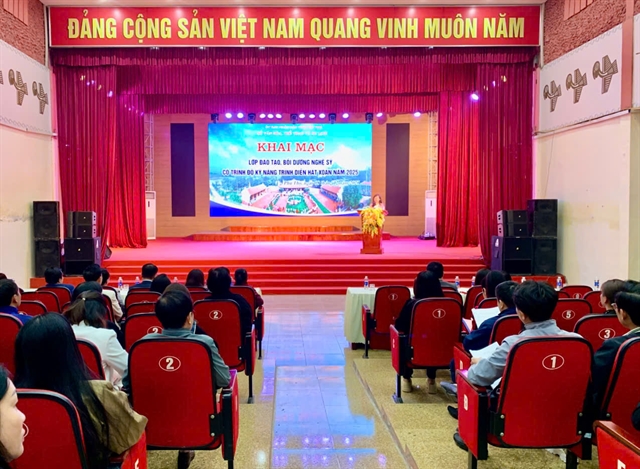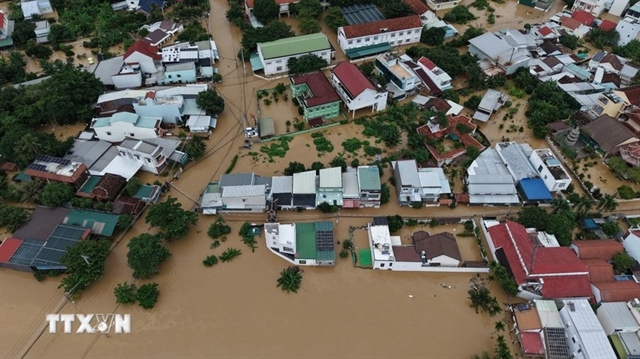 Life & Style
Life & Style
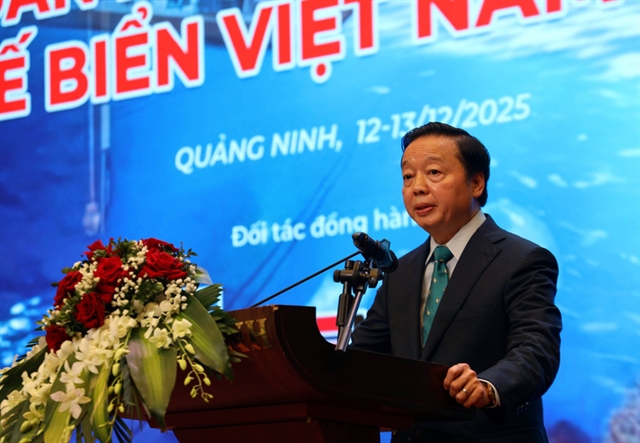
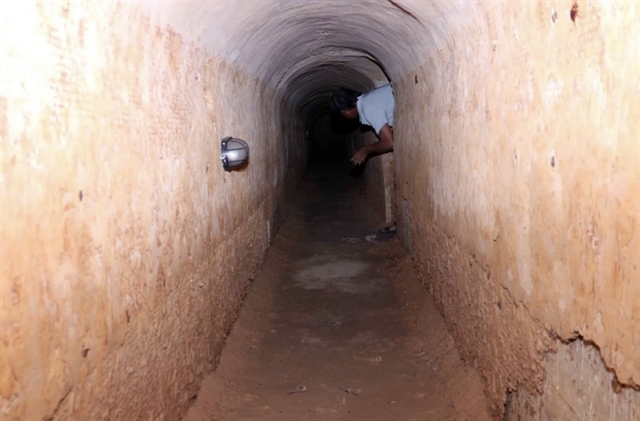
|
| The large tunnel about 30 square metres used as a place to hide weapons and for revolutionary soldiers to stay and meet. VNA/VNS Photo Xuân Khu |
HCM CITY — Only a few people know that about 18km from the famous historical relic of Củ Chi Tunnels, there is a secret bunker hidden inside the house of a former Saigon Ranger.
That is the bunker of Dương Văn Ten (aka Chín Ten), who used it to hide weapons and soldiers.
It was also a major weapons transit point for the historic Mậu Thân 1968 General Offensive and Uprising Campaign.
The hidden bunker
Today, at 110/8 Đoàn Triết Minh Street, Tháp Hamlet, Thái Mỹ Commune, Củ Chi District, there is still an intact house with the old architecture which was built more than 60 years ago.
Inside that house is a secret basement, which was a weapons gathering point and hid soldiers and commanders of the Saigon - Gia Định special rangers in the past.
Dương Văn Ten's secret bunker is located right behind the worship room with a camouflaged entrance hidden under floor tiles and four alleys leading to the outside, including two tunnel doors about three metres from the main tunnel located under bamboo bushes in the garden and a pigsty located close to the edge of the garden.
The large basement is designed under a cow shed with an entrance and a side alley leading to the edge of the garden. All the tunnel doors were designed close to densely wooded areas connecting to the exits outside.
The tunnels were about one metre high and 40 metres long, including a large tunnel about 30 square metres used as a place to hide weapons and for revolutionary soldiers to stay and meet.
The tunnel walls on both sides were made of laterite clay, which was durable and less prone to landslides.
Dương Văn Ký, the fifth son of Ten, a veteran of Thái Mỹ commune, said that his family had had two small secret underground bunkers before.
However, when his father joined the Saigon Ranger force, there was a need for a bunker to store weapons preparing for the 1968 Mau Than General Offensive and Uprising Campaign.
So starting in 1962, his father and his comrades decided to dig a larger shelter right under the family's house. The digging of the shelter was assigned to Chín Ten's family, and all his brothers, sisters, aunts and uncles together dug a new bunker.
Dương Thị Cám, Chin Ten's daughter, recalled: "At that time, I was 10 years old, so I joined my family too."
"We had to dig the bunker at night because the enemy inspected very strictly during the day. Digging the tunnel at night was quite difficult, even the lights had to be turned down just enough so that the enemy would not detect us," she recalled.
The digging lasted from 1962 to 1963.
When the bunker was completed, weapons began to be moved in. It not only stored weapons, but it also frequently became a meeting place and a place to hide soldiers.
In the period of 1965-1966, when the South Vietnamese government applied the "destroy and burn" campaign, leaving revolutionary solders with no place to hide, Ten cover the bunker's entrance to keep it safe and not be discovered by the enemy.
Weapons transport vehicles
During the period from 1966 to 1967, under the direction of his superiors, Ten began to receive and assemble weapons and then find ways to transport them into downtown Saigon to prepare for the 1968 Mậu Thân Offensive and Uprising Campaign.
“At that time, my father received weapons from the Central Office of the South to hide in the bunker, then slowly transported them by the ox cart of Dương Văn Đây, Ten's older brother, to Highway No. 22 and then hand them over to Nguyễn Văn Bảo and Năm Lai (Hero of the Armed Forces Trần Văn Lai - the legend of the Saigon - Gia Định special forces) who brought them to Năm Lai's house in District 3,” Cam recalled.
Because Ten had experience in construction and carpentry, he used this cover to hide weapons inside a vehicle carrying wood and carpentry to transport them to the inner city.
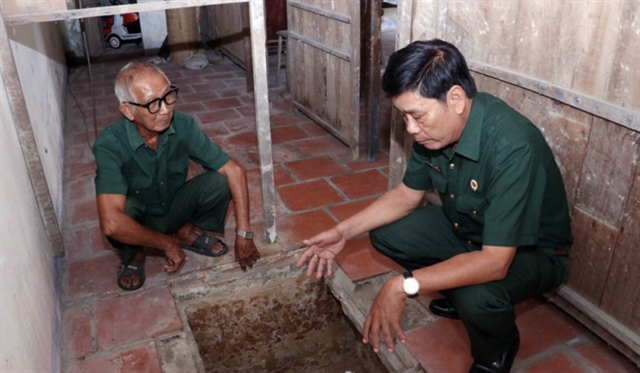
|
| The main cellar door is located right behind the house's altar. VNA/VNS Photo Xuân Khu |
In this way, dozens of tons of weapons from Ten's secret bunker passed enemy checkpoints, were transported smoothly to downtown Saigon, and were gathered at Năm Lai's weapons storage bunker.
Trần Vũ Bình, son of Nám Lai, said that Ten's bunker in Củ Chi District was one of the secret bases serving the Mậu Thân 1968 Campaign.
After the campaign, the bunker was not exposed and continued to be a place to store weapons, hide solders, and hold meetings for the revolution, serving the Hồ Chí Minh Campaign in 1975.
Dương Văn Tròn, Ten's youngest son, said that after liberation, many of his father's comrades such as Hai Phụng, Năm Lai, Ba Bảo and Ba Đen often visited his house to reminisce about old memories.
Before passing away, Ten always told his children and grandchildren to keep the house and bunker intact because this was evidence of the days of intelligent and tenacious fighting of the Saigon - Gia Dinh special forces.
Remembering their father’s words, Tròn’s siblings have kept the house and the bunker intact over the years.
“Occasionally, there are groups of visitors who come to visit and learn about the history of the bunker, and each time I have the opportunity to tell stories about the days when our whole family was actively involved in revolutionary activities. We are very happy to have fulfilled our father’s wish, turning this place into a place to keep the heroic fighting memories of our fathers’ generation,” Tròn shared. - VNS



